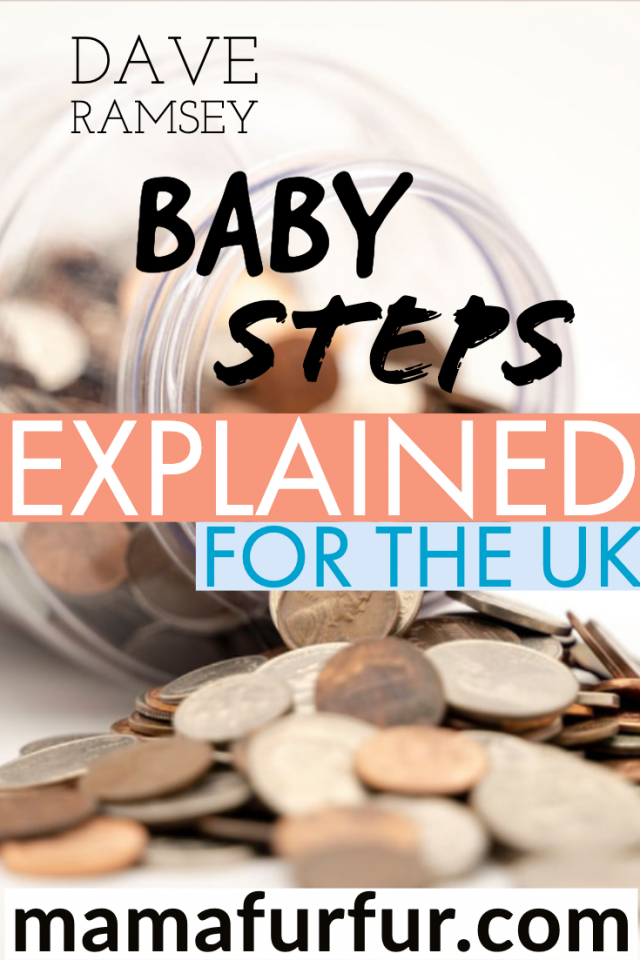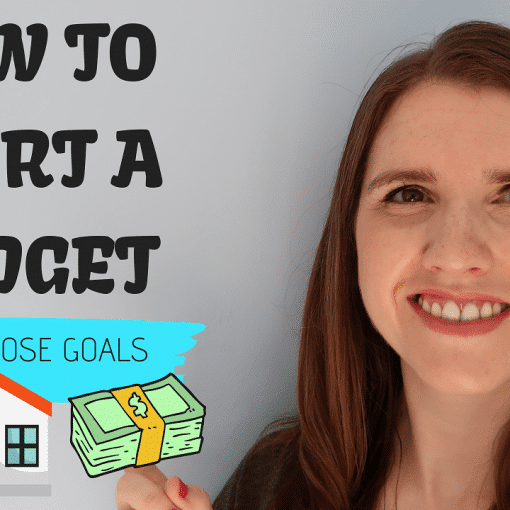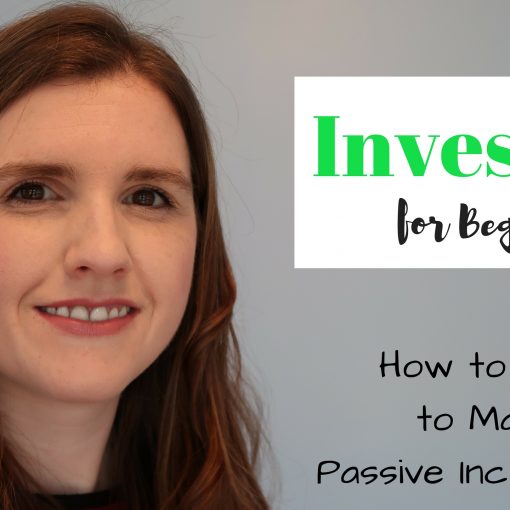 Dave Ramsey Baby Steps and his Financial Plan called “Total Money Makeover” is probably one of the most famous money strategy and management system in the world.
Dave Ramsey Baby Steps and his Financial Plan called “Total Money Makeover” is probably one of the most famous money strategy and management system in the world.
Many people have used his 7 Baby steps to achieve complete debt free circumstances in their lives, and even made a “Debt Free Scream” live on his Radio Show as a result of their hard work and effort.
However understanding the difference between the American terminology mentioned and the UK Equivalent can be difficult, and so I felt it was a great start to break down the 7 steps with the UK counterpart products and bank account options for you to consider if this money method feels like it could add great benefit to your financial plan and journey ahead.
Who is Dave Ramsey?
Described as being the Pioneer of the “Debt Free Movement”, his background saw him gain much wealth to then lose it completely.
As a result of that cycle of gaining wealth and then gaining debt, he made it his passion for over twenty years to structure a step by step process where others can remain debt free, make sensible money choices and create real wealth.
His philosophy for money is based on timeless principles, some often regarded as out of date, but his main focus is to keep people living within the means and not overwhelmed and stressed with debt too big for them to cope with.
Every weekday you can find him live on Youtube and online with his Dave Ramsey Show, where individuals and couples can appear to do their “Debt Free Scream” live on air when they have cleared all their outstanding debt completely as an end reward.
This is a fantastic encouragement for much hard work particularly in the American culture of high student loan debt to pay off usually as part of the first financial commitments of anyone entering adulthood.
As Dave’s main audience though is in the USA, then some of the advice could be seen to not be relevant here in the UK and other parts of the world given that we have different financial products and options.
For example the financial plan steps involved emphasis on paying off Student Debt might not apply in the same way given the way our Student Loans in UK and Ireland are structured for repayment terms.
Let’s break down the Money Makeover Steps, aka the Baby Steps, and the UK equivalent.
Prefer to watch instead of read? Here is my Youtube video all about it instead:
What are the Dave Ramsey Baby Steps UK for this Financial Plan?
In summary they are exactly from his Financial Plan:
- Baby Step 1 – $1,000 to start an Emergency Fund
- Baby Step 2 – Pay off all debt using the Debt Snowball
- Baby Step 3 – 3 to 6 months of expenses in savings
- Baby Step 4 – Invest 15% of household income into Roth IRAs and pre-tax retirement
- Baby Step 5 – College funding for children
- Baby Step 6 – Pay off home early
- Baby Step 7 – Build wealth and give!
So let’s turn those around for the UK equivalent instead.
- Baby Step 1 – £1,000 to start an Emergency Fund
- Baby Step 2 – Pay off all debt using the Debt Snowball
- Baby Step 3 – 3 to 6 months of expenses in savings
- Baby Step 4 – Invest 15% of household income into Investment ISAs (Individual Savings Accounts) and pre-tax pension
- Baby Step 5 – University funding for children (where applies)
- Baby Step 6 – Pay off home early
- Baby Step 7 – Build wealth and give!
Baby Step 1 UK Explained – Create an Emergency Fund
Breaking the habit of using consumer credit card is really the sore purpose of the Baby Steps and the only way to do this is to create a instant access cash savings amount so that for life emergencies that come along, instead of using your credit card, you use that cash saving instead.
Dave recommends $1000 as that initial cash amount to have in savings, and for the purpose of the UK version I would agree that £1000 is a good solid amount to consider.
If you are on low income though, under £20,000 a year, I would consider making £500 total for your Emergency Fund as your initial target to ensure you can get to a good starting place with some effort.
Baby Step 2 UK Explained – Focus on Snowball method for Debt Repayment
Next when we have the full Emergency Fund in cash savings, we can focus our attention on Debt repayment.
There are many methods of doing this based on the most cash efficient methods, such as the Avalanche Method, but the method Dave recommends is the Snowball method.
The Snowball method essentially means that you would find out the exact amount of debt you have in total for each consumer credit account; list them in order of size from smallest to largest; and start making payments to the smallest debt first as the priority.
You should make minimum repayments on the rest of the debts outside of the smallest size debt until it is cleared off completely.
Then using the money total amount you have been paying towards debt overall, you would use that total cash to move and repay the second largest debt making minimum repayments on the rest until it is cleared.
Moving your way through all the debts until they are completely gone and cancelled – effectively building up your “snowball” with money larger and larger.
The benefits of using this method, ignoring the interest percentage for example on the loans, is to encourage you to feel the good emotions towards your debt repayment rather than perhaps the previous stress and pain.
This method is fantastic at helping people gain a great sense of achievement for getting rid of the smaller debt goals with the quickest time period, and give you that sense of achievement.
Baby Step 3 – 3 to 6 months of expenses in savings
Being consumer debt free at this stage, we then aim to create a larger Emergency Fund of roughly three to six times our monthly household expenses.
This total amount per month is made up from any household utility costs, food bills, basic transportation costs, and other home maintenance costs that we would consider essentially to allow us to live safe and comfort should anything happen to our main source of income.
This step drives home the need for financial stability, and by knowing we have instant access again to a good amount of cash should we need it allows us to feel safe and secure around our financial future.
Baby Step 4 – Invest 15% of household income into Investment ISAs (Individual Savings Accounts) and pre-tax pension
Next in the process is creating household incomes for the future when we have the choice to retire.
In the USA, state lead welfare is not guaranteed for older people and this step is vital to allow people to have any form of saved investments as an income for their later years.
In the UK, currently we have the assumption that we can allow for a State Pension in some way for our later years however this very much will not be enough to keep up most people’s standard of living compared to their normal wage amounts.
Recommended here would be placing at least 15% of your pre-tax income into a Private of Company Pension available option so that you can build your pension wealth for the best income possible.
In the UK we also benefit from additional government top ups and tax relief on our pension contributions, seeing up to 41% added on top of the initial payments we sacrifice from our take home pay.
This top up amount is driven by the tax bracket you full under at the time of payment being made, and always worth checking out if your Employer likewise makes additional contributions on your behalf.
Often if you have a Company Pension option, they could make at least a matching contribution or more really growing your pension pot over time without you having to sacrifice additional money.
Using Tax efficient forms of saving in the UK, we can also consider Investment Individual Savings Accounts (Stocks and Shares ISA) in this way.
This particular account allows us to invest in the stock market using our Tax free savings allowance (currently £20,000 per person per year in the UK in 2019/20) to grow our wealth long term.
You can find out more about using Investment ISAs to drive wealth and even how to use them to retire early here:
How to retire early using Investment ISAs
How to retire a Millionaire at any age
Baby Step 5 – University funding for children (where applies)
The focus of the Baby Steps financial plan is allowing debt free living for multiple generations to benefit and one of the ways it focuses on this is by encouraging parents to save as much as they can for their children’s education.
This is to prevent the need for those very expensive student loans that must be paid back in full in the USA.
In the UK though, only some countries require the need for paying for your post school education and often at far less costs compared to the US equivalent degrees.
For example, if you are based in Scotland as a resident you will receive your first full time education degree for free in terms of the financial institution fees.
In Wales, these fees are also likely to be subsidised greatly.
You can still take out Student Loans in these countries though for covering additional costs such as textbooks and living fees but it would mainly be in England and Ireland where tuition fees would need to saved for if you wished your children to have cash savings to cover them in full.
Repayment of Student loans are very different compared to the USA, where repayment models are based exclusively on how much you earn post graduation and the expected repayment fees.
You can find out more about Student loans and repaying them in the UK in my video here:
Baby Step 6 – Pay off home early
The next focus for the plan is to be completely debt free in all forms, and using spare cash in your budget towards paying down your mortgage.
Dave Ramsey advises to have a 15 year mortgage in order to pay this back fairly quickly but this is also based on the US Banking system where options for mortgage interest rates are locked when you take out the loan initially.
In the UK we have options to “remortgage” effectively and use interest rates based on the Bank of England Base rate or fixed for a certain period of time of our mortgage – again so we certainly should not feel that the need for a 15 year mortgage is the only option.
Generally in the UK assuming a 20-25 year mortgage would be good enough but the goal would be to make as many repayments are you can without penalty from the bank as a result.
You can find out more about Mortgages in the UK here and also how to repay your mortgage quicker with UK advice.
Baby Step 7 – Build wealth and give!
Lastly with all our income used so far to remove as much financial obligations within our financial plan to us as possible, now is the time to build wealth through investments and give back to others.
Generally aiming for 10% of your income to be given to charities and causes you believe in, or simply to others that you feel inspiration to help.
Building wealth using various methods such as Investment Portfolios and Savings will allow your wealth to grow exponentially in the background.
What are the best Dave Ramsey Recommended Books and Resources?
The recommended book for understanding more behind Dave Ramsey’s Baby Steps would be Total Money Makeover available on Amazon (this is an affiliate link).
If you enjoyed that you would then consider his Complete Guide to Money. (Affiliate amazon link)
Best Dave Ramsey Quotes for motivation and inspiration
- “We buy things we don’t need with money we don’t have to impress people we don’t like.” …
- “If you will live like no one else, later you can live like no one else.” …
- “Act your wage.” …
If you are looking at starting the first steps of any budget or money method I can recommend also more of my posts here:
How to create a Budget that works – Step by Step Guide










One thought on “Dave Ramsey 7 Baby Steps Explained UK – Financial Plan for being Debt FREE”
A great post Mamafurfur – I am currently listening to a lot of DR – there is 2.5 hrs worth of podcast everyday ! – I really like how the baby steps simplify the journey providing clear action and priorities for people.
It has an internal Logic that makes sense financially and in terms of behaviour – one thing I don’t fully sign up to
Is his insistence on paying cash for investment property – which is not the received wisdom in terms of leverage.
Also his religious views drive some of his financial advice which I don’t agree with BUT what an impressive construction to personal finance – I also like his direct reference to giving money away – if you have wealth you should help others less fortunate.